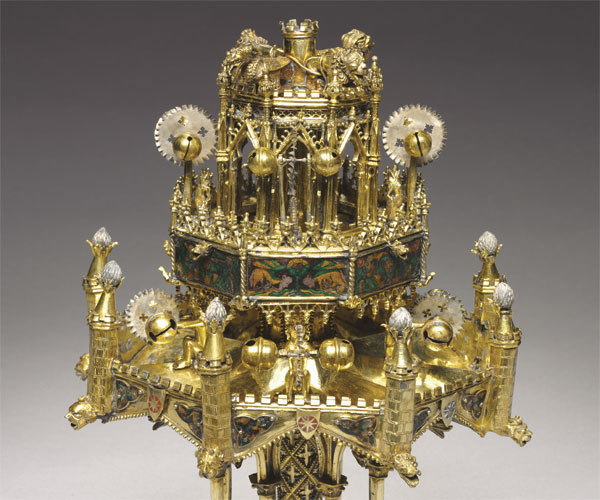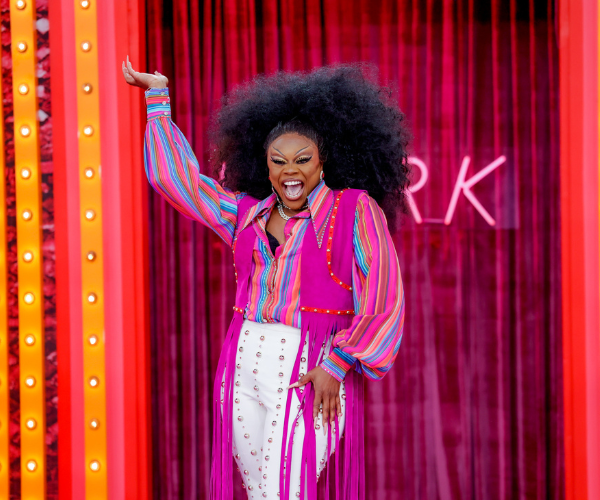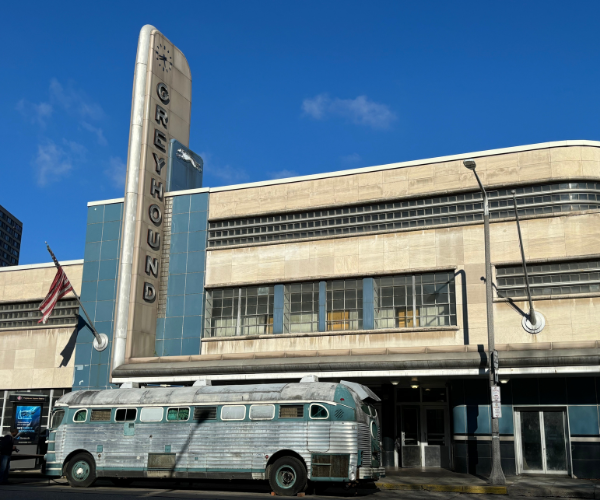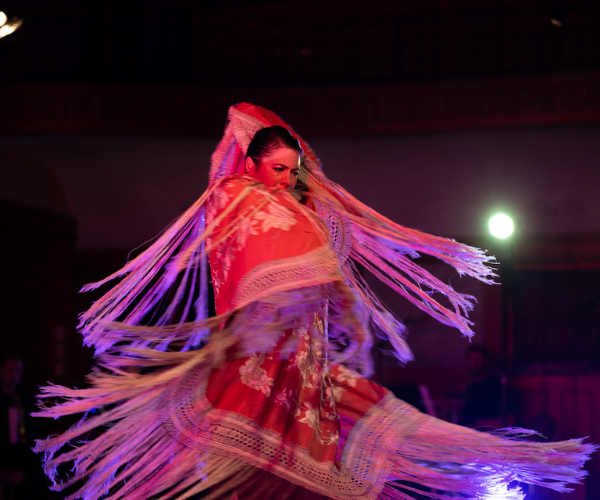Water Works
Cleveland Museum of Art puts a rare Gothic table fountain at the center of a new exhibit.
After more than 100 years, Jeptha Homer Wade II’s contributions to the Cleveland Museum of Art still glitter like rare artifacts. One of four men who founded the institution and who donated the land where it sits, Wade spent years traveling Europe and Asia and donated more than 2,300 items, including major paintings, textiles and decorative art to the museum.
In 1924, Wade funded the acquisition of a precious 14th-century Gothic table fountain that then-museum director William Milliken discovered in a Paris art market. Made of gilt silver and embellished with colorful translucent enamel, the ornate piece is adorned with miniature Gothic parapets, arcades, vaults, pinnacles, columns and arches. While artistically beautiful, it is a technical marvel as well: Water would’ve been pumped through it, moving pieces and ringing bells.
“We have the only fully intact and functional Gothic fountain left in existence,” says Stephen N. Fliegel, co-curator of the exhibit and the curator of medieval art. It serves as the centerpiece for Myth and Mystique: Cleveland’s Gothic Table Fountain, which explores the piece’s history, function and artistry. “It was very expensive to produce and extreme care has been taken with its detail,” Fliegel says.
Placed at the center of the Julia and Larry Pollock Focus Gallery, the fountain will be surrounded by silver pieces, hand-washing vessels, enamels, illuminated manuscripts and a small panel painting by the medieval artist Jan van Eyck. “From our research, we’ve learned that calling it a table fountain is a bit of a misnomer,” Fliegel says. “It more likely stood on a pedestal in large vestibules of the owner’s estate.”
The van Eyck painting, for example, shows a mother and child standing in a garden near a fountain fed by gushing water through an underground pipe. Meanwhile an illustration in the Grandes Chroniques de France manuscript reveals a bustling banquet with no sign of a fountain.
“The manuscript seems to prove that the fountains did not in fact decorate banquet tables as previously thought,” he says. “This piece was more than likely commissioned by a monarch. It was a status symbol, a signifier of the owner’s wealth.” Oct. 9-Feb. 26, Cleveland Museum of Art, clevelandart.org
Our Land
In the mid-1800s when photographer Carleton Watkins chased the gold rush from New York to California, he struck rich elsewhere: the area now known as Yosemite National Park. His stunning photos of nature did more than just captivate East Coast viewers — it helped establish the National Park Service. “A lot of lawmakers couldn’t get out to the [West Coast],” says Theresa Bembnister, associate curator at the Akron Art Museum. “Watkins’ photographs and those of other artists helped them see what they couldn’t otherwise.” To celebrate the National Park Service’s centennial, the exhibit features works by Watkins, Ansel Adams and contemporary artists including Robert Glenn Ketchum, who honors our Cuyahoga Valley. “You’ll see a pretty picture,” says Bembnister. “But if you look a little harder, you will understand that these artists are trying to send a message about the way we treat land.” Aug. 6-Feb. 12, Akron Art Museum, akronartmuseum.org
Design Zone
If you missed riding Cedar Point’s new Valravn coaster this summer, don’t worry your thrill-seeking little head. The Great Lakes Science Center Design Zone exhibit gives visitors the chance to test their nerves (and creativity) by designing a roller coaster — and then trying it out via simulator. “What this exhibit really does is turn you into a creator,” says Kirsten Ellenbogen, president and CEO. “You actually begin to see the engineering and mathematics behind all of this design.” Developed by the Oregon Museum of Science and Industry, the exhibit also includes interactive displays on music composition and video game development. “If you can really play around with them in balancing a song or designing a roller coaster or creating a video game,” says Ellenbogen, “you’re going to be a lot more confident and appreciative of where math is in life.” Oct. 1-Jan. 2, Great Lakes Science Center, greatscience.com
Our Global Kitchen: Food, Nature, Culture
Ever wonder how Olympic gold medalist Michael Phelps got in those 12,000 calories a day to prep for his swimming heats? This Cleveland Museum of Natural History exhibit lets you dive into models of the swimmer’s training breakfast as well as the dining rooms of figures ranging from Mongolian empire ruler Kublai Khan to acclaimed writer Jane Austen. “Our Global Kitchen is an expansive look at food, culture, history and process throughout the world,” says Joel Alpern, exhibits director. Experience meal prep from different cultures, sniff out scents in an interactive smell exhibit and even taste the real thing at live demos by Zack Bruell Events Saturday afternoons during the exhibition’s run. “Cleveland has had a food renaissance in the city in the last 10 years,” says Alpern. “[The exhibit] is really going to be terrific for folks who are passionate about food here in Cleveland and gives that cultural and historical context.” Sept. 3-Jan. 8, Cleveland Museum of Natural History, cmnh.org




